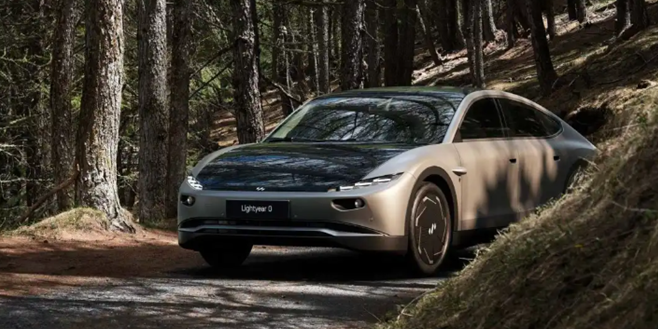The power conversion efficiency of perovskite solar cells has seen remarkable progress over the past decade. These cells not only absorb sunlight efficiently but also maintain high power generation capabilities even under low-light conditions, making them particularly suitable for automotive applications. Additionally, perovskite films are extremely thin and can be fabricated on flexible substrates, weighing over 80% less than traditional silicon cells. This lightweight and flexible nature allows them to be seamlessly integrated into car roofs, windows, or even the entire curved body without compromising vehicle design or performance.
In March 2025, Ouyang Minggao, academician of the Chinese Academy of Sciences and vice chairman, stated that perovskite solar thin films could be a transformative energy-supply technology for the new energy vehicle industry. Compared to rigid crystalline silicon cells, transparent perovskite films can cover the entire vehicle body for energy harvesting, with a coverage area of up to 10 square meters—five times that of silicon-based photovoltaics. This technology can generate 6 to 8 kWh of electricity daily, sufficient to meet the basic commuting needs of 80% of domestic drivers.
Once full-body perovskite film-powered cells achieve mass production and vehicle-to-grid (V2G) technology becomes widespread, green electricity is expected to dominate by 2035. By then, total global sales could approach 30 million units, with an estimated fleet of 200 to 300 million new energy vehicles, marking the true decarbonization of the automotive industry.
In practical applications, perovskite cells are already reshaping how new energy vehicles are powered. For instance, automakers like Hyundai and Toyota are testing energy vehicles with perovskite solar roofs, which could add 20 to 50 km of range per day. Companies like Tesla are exploring perovskite coatings for entire vehicle bodies to further enhance energy self-sufficiency. Beyond supplementing the powertrain, perovskite cells can also power onboard systems such as air conditioning and infotainment, reducing reliance on the main cell. In military and specialized vehicles, this technology provides stable power for field operations and can even be integrated into mobile equipment.
When discussing the "PV + automotive" concept, the Dutch company Lightyear is unavoidable. In June 2022, Lightyear unveiled the world’s first solar-powered car, the Lightyear 0, with an initial production run of 946 units.

The car features approximately 5 square meters (53.8 sq ft) of double-curved solar panels on its hood and roof, delivering 1.05 kW of power under optimal sunlight. Just one hour of charging in the sun can add about 9.98 km of range, with a maximum daily gain of around 70 km. This means that in sunny regions, the car can function as a commuter vehicle for months on a full charge without needing to plug in.
Lightyear’s debut was nothing short of groundbreaking. While solar-powered energy vehicles were not a new concept, Lightyear effectively addressed the pain point of limited charging infrastructure for pure electric vehicles.

(Image: Lightyear Product Application Scenarios)